Reproductive behavior, seasonality, and distribution of three devil ray species (Mobula mobular, M. thurstoni, and M. munkiana) in the Southern Gulf of California, Mexico
November 2023
Marta D. Palacios, Abel Trejo-Ramírez, Sidharta Velázquez-Hernández, Scarlett A. K. Huesca-Mayorga, Joshua D. Stewart, Melissa R. Cronin, Nerea Lezama-Ochoa, Kelly M. Zilliacus, Rogelio González‑Armas, Felipe Galván‑Magaña & Donald A. Croll
Keywords: Mobulid • Courtship and Mating • Critical Habitat • Aggregations • Management

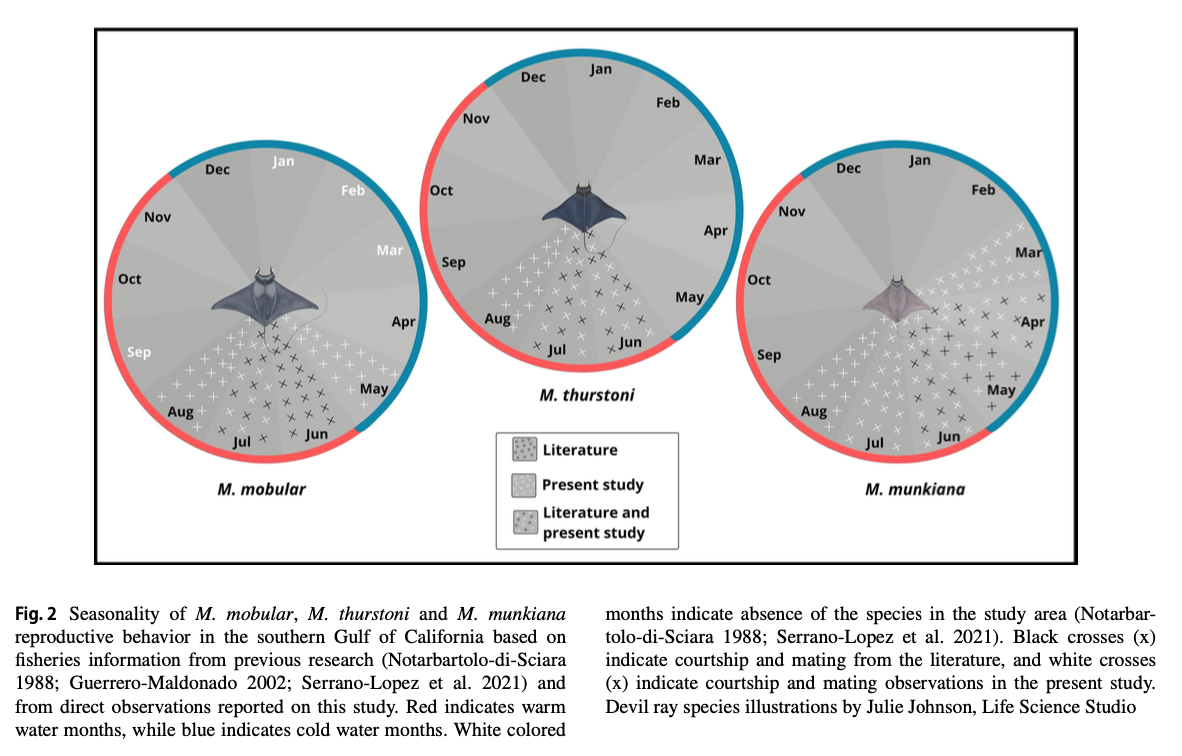
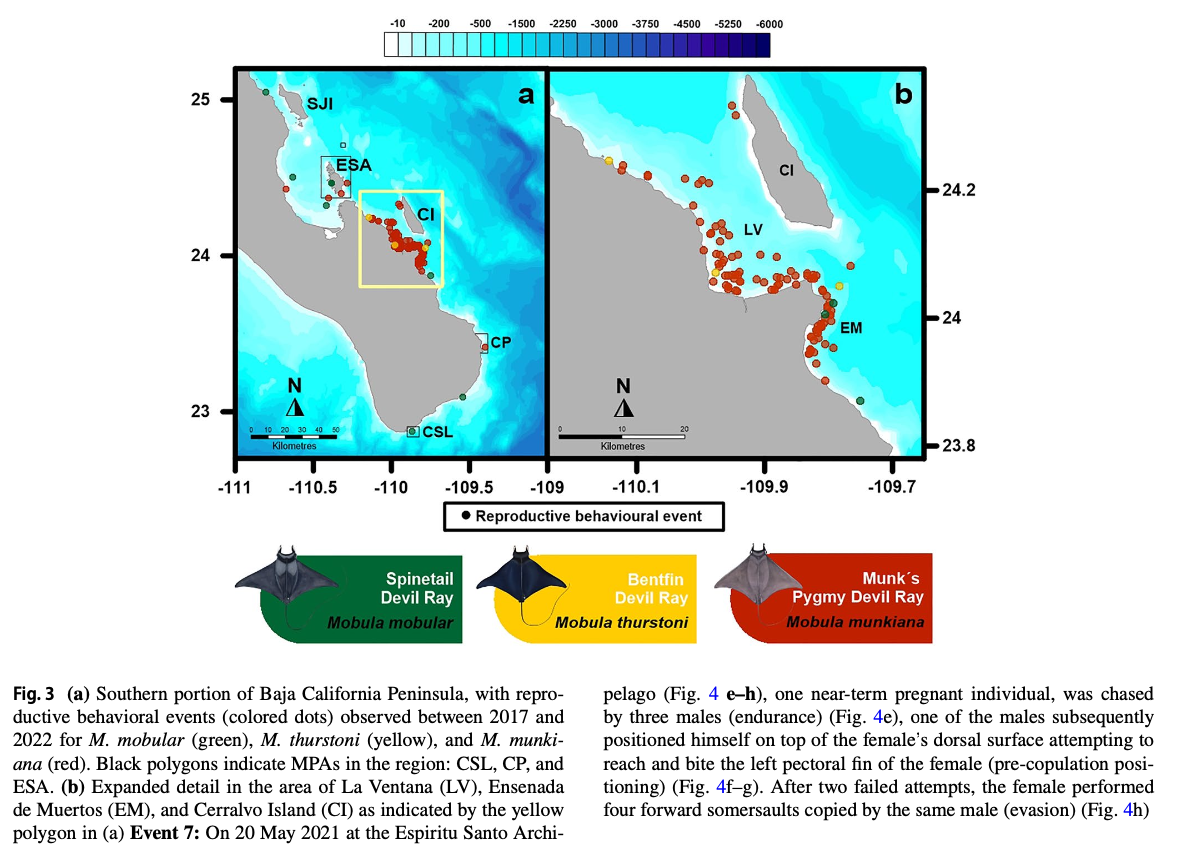

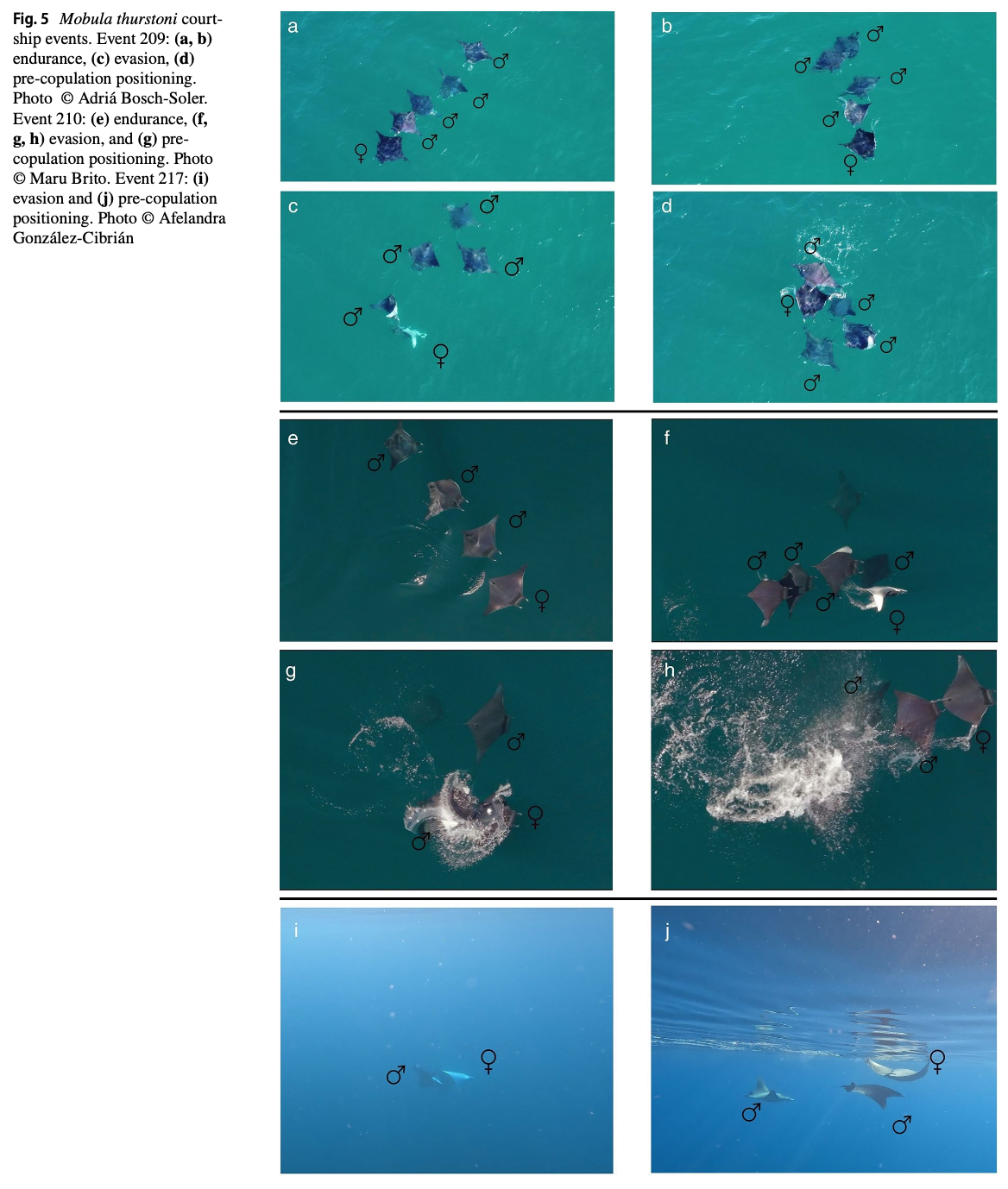
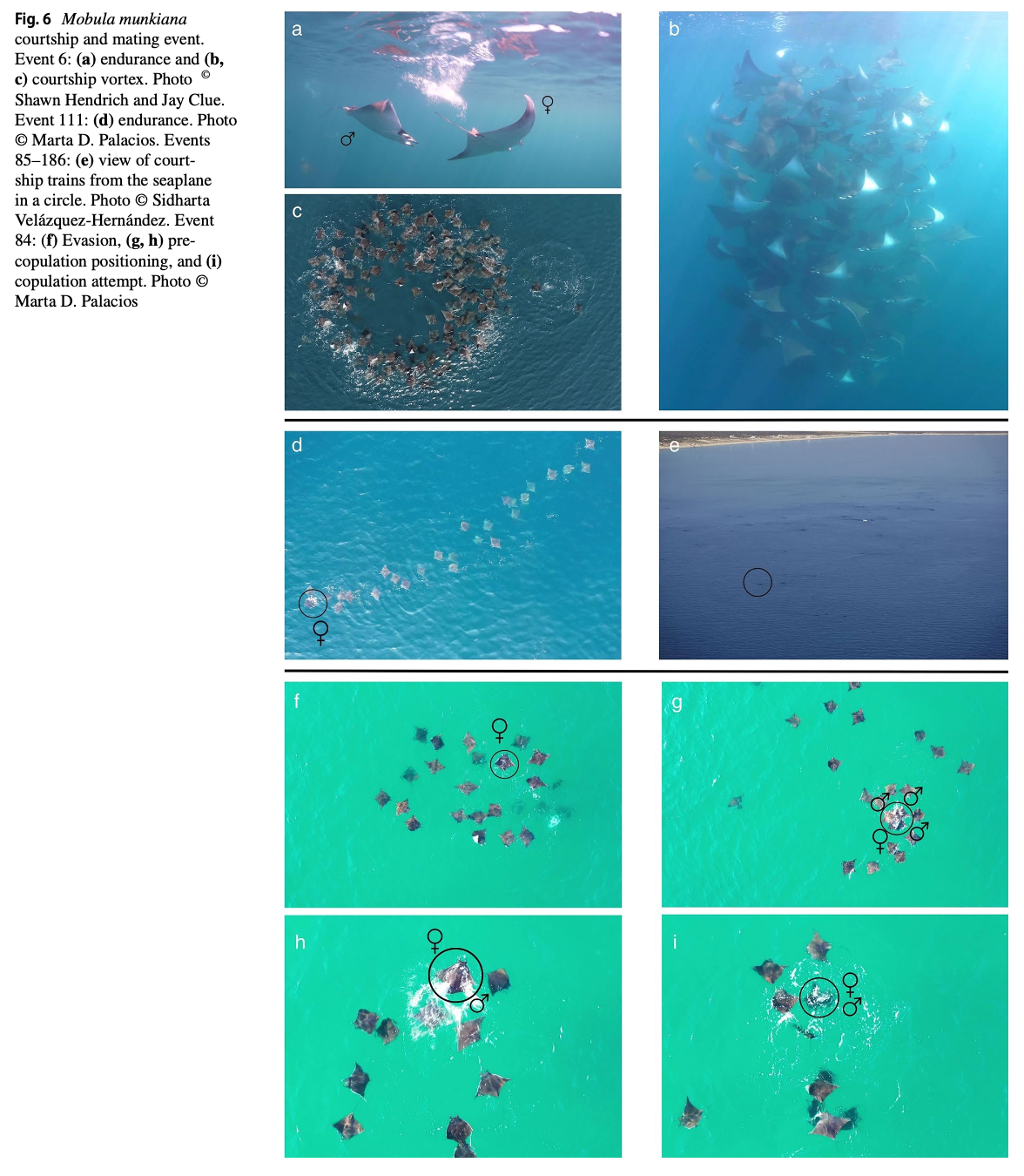

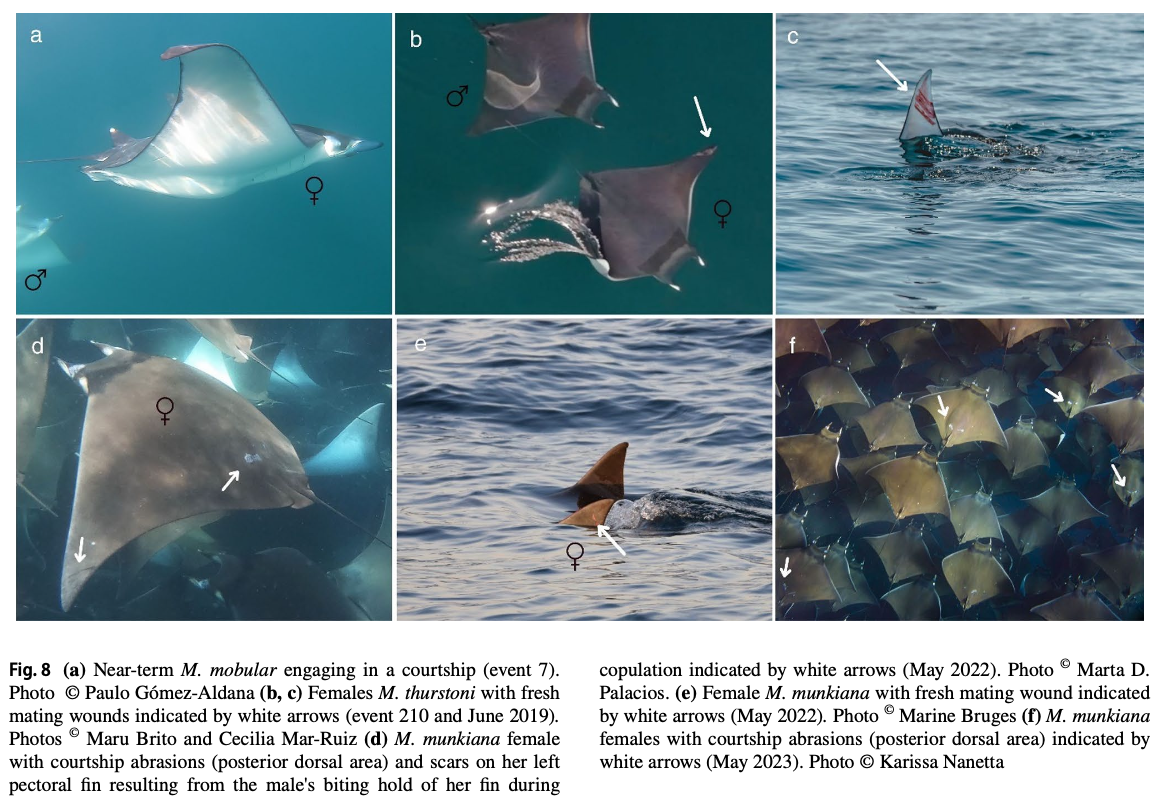
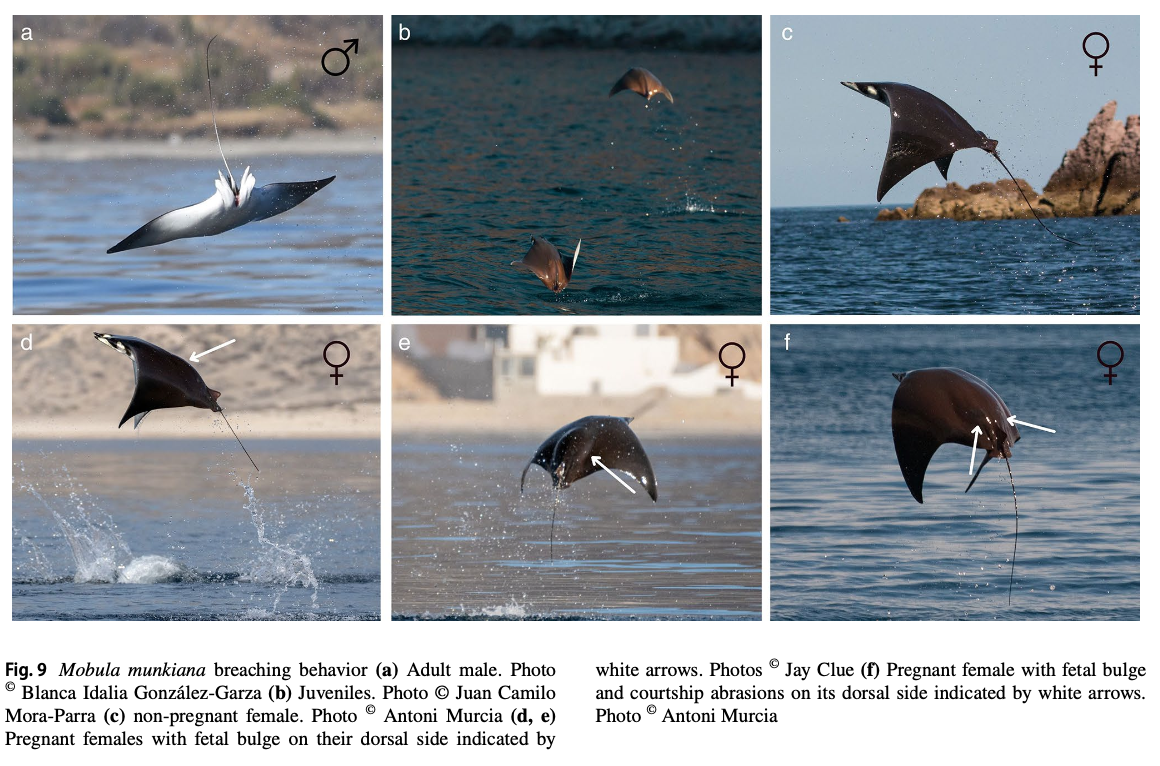
Summary: In the southwestern Gulf of California, Mexico, this study led by Marta D. Palacios, investigated the reproductive behaviour, seasonality, and distribution of three Mobula ray species—M. mobular, M. thurstoni, and M. munkiana. Utilizing boat surveys, spotter planes, and citizen science observations, researchers identified reproductive events from March to August, peaking in May. La Ventana and Ensenada de Muertos were identified as crucial habitats for the courtship and mating behaviours, with Mobula munkiana exhibiting unique behaviours like "piggyback leaps" and the "courtship vortex." The study underscores the importance of these areas for endangered and vulnerable devil ray species' reproductive activities.
Abstract
“We examined the reproductive behavior (courtship and mating), seasonality and its distribution in three Mobula species, spinetail, bentfin, and Munk’s devil rays (M. mobular, M. thurstoni, and M. munkiana) in the southwestern Gulf of California, Mexico, using boat surveys (with drone and in-water observations) (n = 69 survey days), spotter planes (n = 428 flights), and citizen science observations (n = 31). We examined whether (1) reproductive grounds existed within the area for any of these species, (2) whether reproductive behavior followed seasonal patterns, and (3) if this behavior was similar among all mobula rays. We observed reproductive behavior in 221 events in 2017 and 2021–2022, for M. mobular (n = 10), M. thurstoni (n = 3), and M. munkiana (n = 208) dispersed along 312 km of the eastern Baja California Peninsula between 4 m and 6.3 km away from the coast. Most events (n = 209) occurred in the La Ventana and Ensenada de Muertos areas. Courtship was observed for M. mobular and M. thurstoni and a copulation attempt for M. munkiana, with reproductive behavior following a seasonal pattern occurring from March to August, with a peak during May (81.9% of the events). Mobula munkiana displayed previously undescribed behaviors, such as the “piggyback leaps” as a pre-copulatory position and the “courtship vortex”, where 122 individuals were observed circling in a clockwise direction for 5 h with courtship groups joining and leaving the main vortex formation. This study highlights the areas of La Ventana and Ensenada de Muertos as critical habitats for reproductive behavior of two endangered and one vulnerable devil ray species.”
Infographics
In The Press
Author Affiliations
Instituto Politécnico Nacional, Centro Interdisciplinario de Ciencias Marinas
Mobula Conservation
Pelagios Kakunja A.C
The Manta Trust
Ocean Life Flights
Baja Expeditions
Ocean Ecology Lab, Department of Fisheries, Marine Mammal Institute, Oregon State University
Nicholas School of the Environment, Duke University
Institute of Marine Science, University of California Santa Cruz
Department of Ecology and Evolutionary Biology, University of California Santa Cruz
Funded by
Walter Munk Foundation for the Oceans
Monterey Bay Aquarium Foundation
The Explorers Club
Dive Ninjas Expeditions
Blancpain Manufacture of Fine Watchmaking
Consejo Nacional de Ciencia y Tecnología
BEIFI




